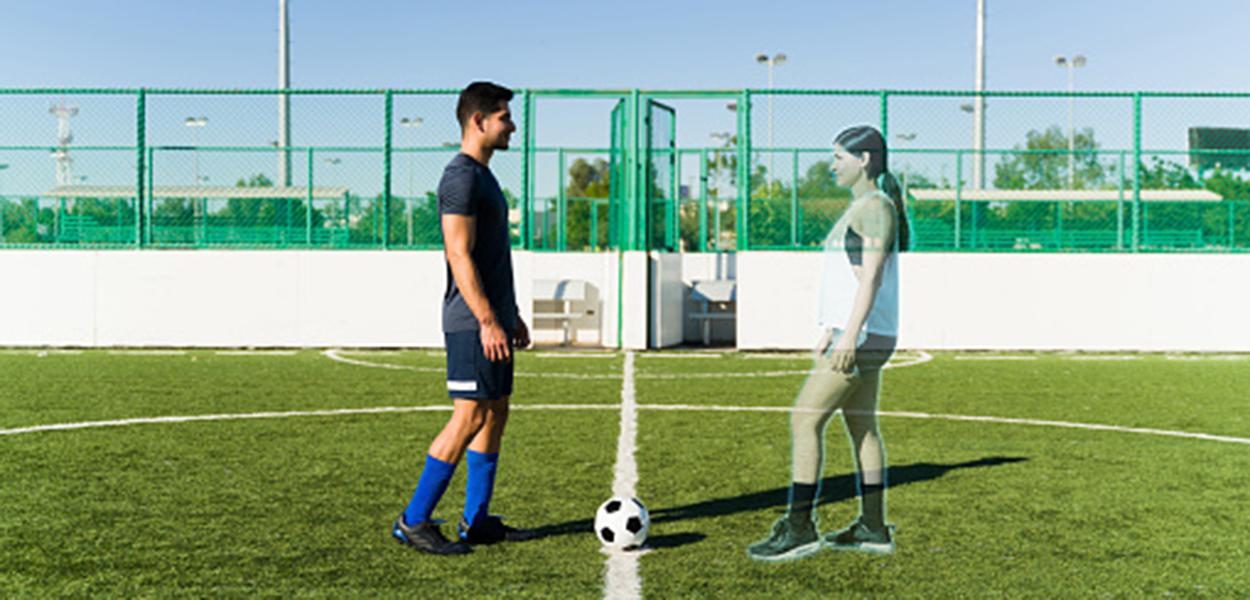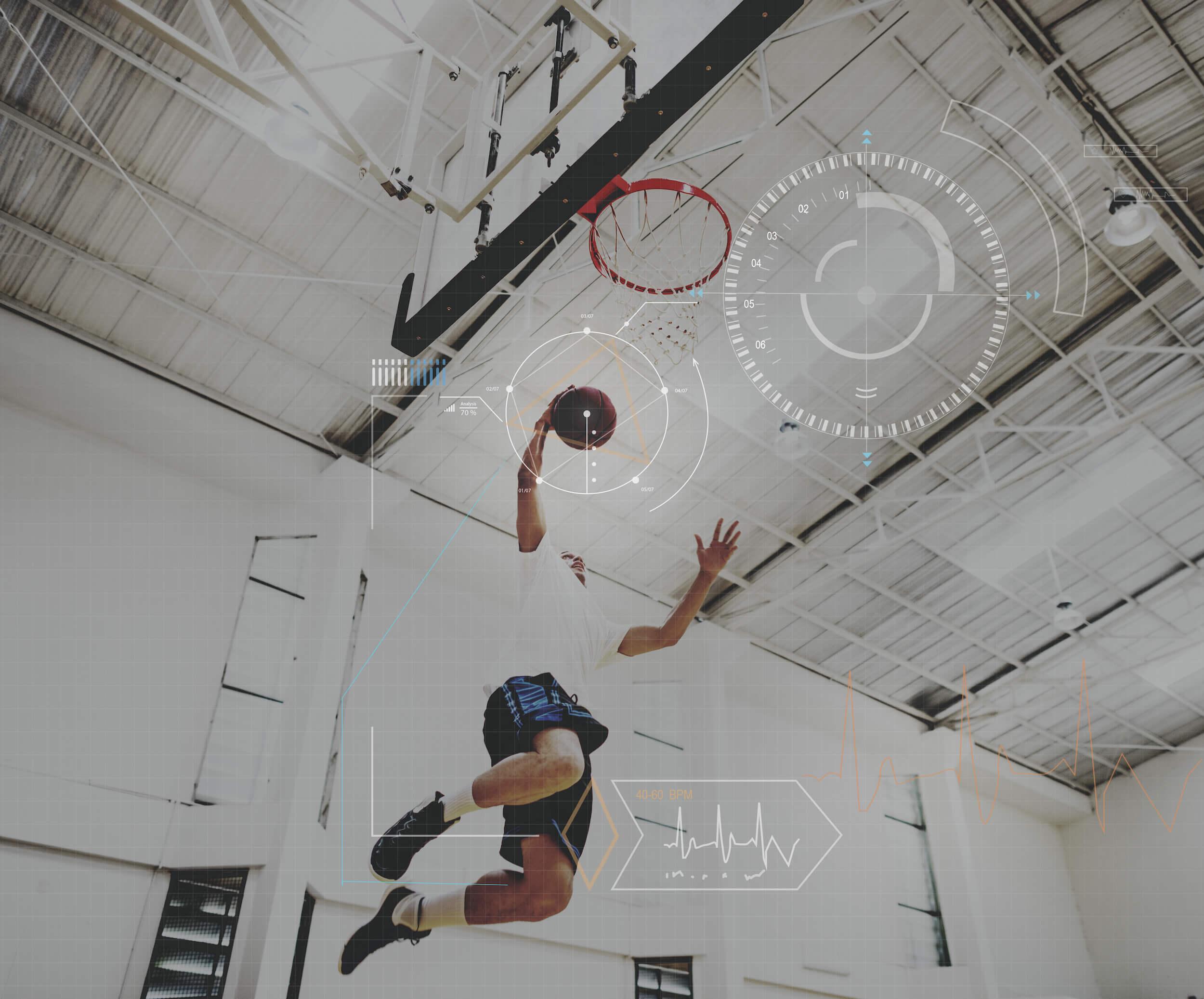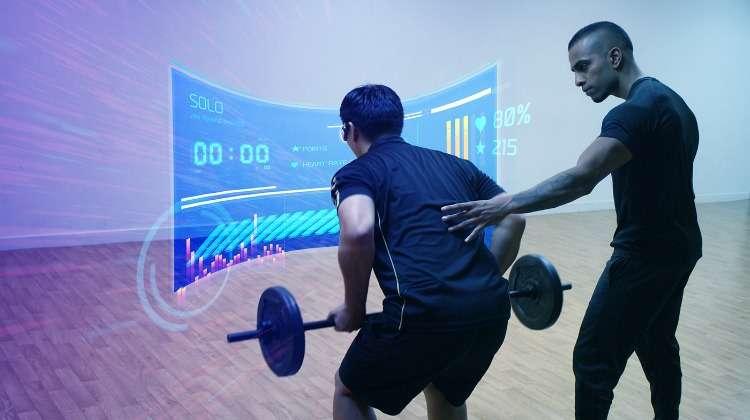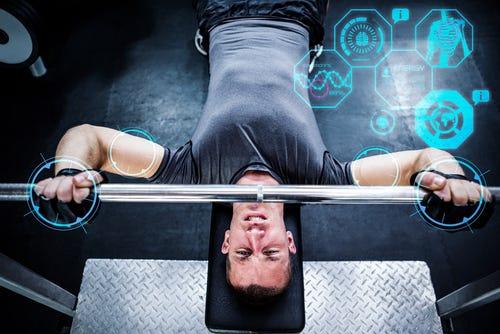In the ever-evolving world of sports, where milliseconds and millimeters can define victory or defeat, innovation is as crucial as talent. Among the cutting-edge technologies transforming athletic performance, augmented reality (AR) stands out as a game-changer. By seamlessly blending digital elements with the physical environment, AR is reshaping how athletes train, analyze, and perfect their skills. This fusion of virtual insight and real-world practice is opening new frontiers, offering coaches and players unprecedented tools to elevate the art and science of sports training. In this article, we explore the dynamic ways augmented reality is stepping onto the field and into the gym, revolutionizing the path to peak performance.
Table of Contents
- Augmented Reality Enhancing Athlete Performance and Skill Development
- Immersive Training Environments for Real-Time Feedback and Adjustment
- Integrating AR with Wearable Technology for Personalized Coaching
- Overcoming Challenges in AR Adoption for Sports Training Programs
- Future Trends and Practical Recommendations for AR in Athletic Training
- Key Takeaways

Augmented Reality Enhancing Athlete Performance and Skill Development
Imagine stepping into a training session where real-time data seamlessly overlays your environment, guiding every move with precision. This is no longer a futuristic fantasy but a present-day reality, as athletes leverage augmented reality (AR) to elevate their performance and refine their skills. By blending digital insights with physical practice, AR creates immersive training environments that challenge both the mind and body, fostering rapid improvement.
Key benefits of AR in athlete development include:
- Instant Feedback: Athletes receive immediate analysis on posture, speed, and technique, allowing for quick adjustments during practice.
- Enhanced Visualization: Complex plays and tactics are projected in 3D, making strategic understanding more intuitive and engaging.
- Simulated Game Scenarios: Virtual opponents and environments mimic real-game pressures, helping athletes build mental resilience and decision-making skills.
Coaches also gain unprecedented tools for performance tracking and personalized training plans through AR platforms. For example, wearable AR glasses can display biometric data such as heart rate and fatigue levels in the athlete’s field of vision, enabling proactive adjustments to prevent injury and optimize effort.
| AR Feature | Benefit | Example Use |
|---|---|---|
| Motion Capture | Precise form correction | Improving golf swing mechanics |
| 3D Tactical Overlays | Better game strategy comprehension | Visualizing soccer formations |
| Virtual Opponents | Mental and physical conditioning | Simulated sparring in boxing |

Immersive Training Environments for Real-Time Feedback and Adjustment
Imagine stepping into a training session where every move you make is analyzed instantly, and the environment around you adapts dynamically to your performance. This is the new reality enabled by augmented reality (AR) in sports training. By blending virtual elements with the physical world, athletes gain access to immersive environments that offer real-time feedback and allow for immediate adjustments to their techniques, strategies, and physical output.
Athletes wear AR glasses or use AR-enabled devices that overlay data such as speed, trajectory, heart rate, and fatigue levels directly onto their field of vision. This live data stream empowers coaches and players to pinpoint areas needing improvement without waiting for post-session analysis. For example, a basketball player can see the optimal shooting arc visualized in front of them, adjusting their stance and release on the spot to maximize accuracy.
- Instant performance metrics: Speed, power, accuracy, and biomechanics displayed in real time.
- Scenario simulation: Virtual defenders or obstacles appear to challenge decision-making and reaction times.
- Adaptive training modules: Difficulty and intensity levels automatically adjust based on live feedback.
| Sport | AR Feature | Benefit |
|---|---|---|
| Soccer | Virtual opponent positioning | Enhances spatial awareness and tactical decisions |
| Tennis | Shot trajectory overlay | Improves precision and stroke technique |
| Track & Field | Speed and form analysis | Optimizes running efficiency and reduces injury risk |
By harnessing these immersive training environments, athletes can iterate on their skills faster than ever before. The seamless integration of feedback loops ensures that adjustments are not just theoretical but immediately actionable, fostering an accelerated path to peak performance. This technology turns every training session into a personalized, data-driven experience tailored to the athlete’s evolving needs.
Integrating AR with Wearable Technology for Personalized Coaching
Imagine having a personal coach right on your wrist or embedded in your glasses, delivering real-time insights tailored just for you. By merging augmented reality with wearable technology, athletes gain access to a dynamic feedback loop that adapts instantaneously to their performance. This fusion creates an immersive learning environment where data meets physical movement, allowing users to visualize corrections and improvements directly within their field of view.
Wearable devices such as smart glasses, AR-enabled helmets, and biometric sensors collect crucial metrics – from heart rate and muscle fatigue to stride length and balance. These inputs are then overlaid with contextual visual cues through AR displays, offering personalized drills, posture adjustments, or pacing strategies. The immediacy of this feedback ensures that athletes can make micro-corrections on the fly, optimizing their training efficiency and reducing injury risks.
- Real-time biomechanical analysis with visual overlays
- Customized workout adjustments based on physiological data
- Immersive simulations to replicate competitive scenarios
- Seamless integration with AI-driven coaching algorithms
| Wearable Device | AR Feature | Benefit |
|---|---|---|
| Smart Glasses | Visual form correction | Immediate posture adjustments |
| AR Helmet | 360° performance metrics | Enhanced spatial awareness |
| Biometric Band | Heart rate visualization | Optimized endurance training |
Ultimately, the synergy of AR and wearables ushers in a new era where personalized coaching is no longer confined to traditional settings. Athletes of all levels can train smarter, receive targeted guidance, and unlock their full potential – all while staying connected to their own evolving data landscape.

Overcoming Challenges in AR Adoption for Sports Training Programs
Integrating augmented reality into sports training isn’t without its hurdles. One of the primary barriers is the high initial cost of AR hardware and software, which can deter smaller teams or training centers from adopting the technology. Moreover, ensuring that the AR systems are tailored to specific sports demands substantial investment in custom content development and continuous updates to keep pace with evolving training methodologies.
Another significant challenge lies in the technical expertise required to operate and maintain AR equipment. Coaches and athletes often need specialized training to utilize AR tools effectively, which can slow down the adoption process. Resistance to change within traditional training setups can also impede progress, as some stakeholders may prefer conventional methods over innovative technology-driven approaches.
- Data accuracy: Ensuring AR-generated insights are reliable and actionable.
- Physical comfort: Designing lightweight and ergonomic AR gear for athletes.
- Connectivity: Maintaining stable and fast connections for real-time feedback.
| Challenge | Impact | Solution |
|---|---|---|
| Cost of Equipment | Limits accessibility | Leasing options and scalable systems |
| Technical Skills | Slow adoption rate | Comprehensive training programs |
| User Resistance | Hinders integration | Demonstrations and success stories |
Overcoming these obstacles requires a collaborative approach between technology providers, coaches, and athletes. By focusing on user-friendly design and offering tailored support, AR can transition from a futuristic concept to a practical tool that enhances athletic performance and reshapes how training is conducted across sports disciplines.

Future Trends and Practical Recommendations for AR in Athletic Training
As augmented reality continues to evolve, its integration into athletic training is poised to become more immersive and data-driven. Emerging trends suggest a shift towards hyper-personalized training programs, where AR systems analyze an athlete’s biomechanics in real-time and adapt drills to optimize performance and reduce injury risks. This level of customization promises to transform how coaches and athletes interact, making feedback both instantaneous and actionable.
Another exciting development lies in the fusion of AR with artificial intelligence, enabling predictive analytics that anticipate fatigue or potential injuries before they manifest. Trainers will be empowered with dashboards that highlight subtle changes in an athlete’s form or endurance, allowing for timely interventions. This proactive approach can significantly enhance an athlete’s career longevity and competitive edge.
To harness these advancements effectively, practitioners should focus on the following practical recommendations:
- Invest in user-friendly AR hardware that integrates seamlessly with existing training routines to avoid disruption.
- Encourage collaborative sessions where athletes and coaches review AR-generated data together, fostering deeper understanding and trust in the technology.
- Prioritize data privacy and security to protect sensitive performance metrics and maintain athlete confidence.
- Continuously update training content to reflect the latest sports science discoveries and technology improvements.
| Trend | Benefit | Implementation Tip |
|---|---|---|
| AI-Driven Analytics | Predicts injuries early | Integrate with wearable sensors |
| Real-Time Biomechanics | Enhances technique precision | Use AR glasses during drills |
| Collaborative AR Spaces | Improves coach-athlete communication | Schedule regular review sessions |
Key Takeaways
As the lines between the physical and digital worlds continue to blur, augmented reality is transforming sports training from a routine into a revolutionary experience. By merging real-time data with immersive visuals, athletes can push their limits, refine their skills, and gain insights that were once unimaginable. While the technology is still evolving, its impact on training methods signals a future where the game is not only played on the field but also shaped in virtual space-making every practice a step closer to peak performance. In this brave new world of sports, augmented reality isn’t just an aid; it’s a game-changer.

